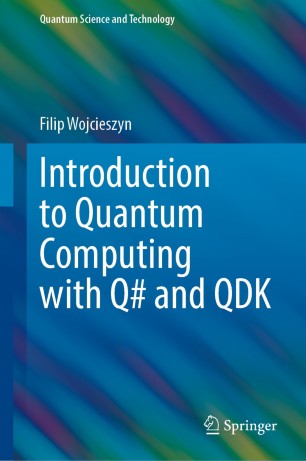dotnet-script 1.3 is out with .NET 6.0 support
Last week we released version 1.3 of dotnet-script. The latest release introduces support for .NET 6.0 and C# 10 and is available, as usually, through Github releases and on Nuget. You will need to have at least the .NET SDK 6.0.100 installed.
The related language services in OmniSharp (e.g. C# extension for VS Code) have already been updated accordingly a while ago.
dotnet-script 1.2 is out with assembly isolation feature
Last month we released version 1.2 of dotnet-script. This was already 36th release of the tool and I am proud to say all the dotnet-script releated packages on Nuget have passed 1 million downloads - thanks a lot!
The latest release (which already has a 1.2.1 patch too), contains several useful bug fixes, including a memory leak and one excellent new feature - assembly isolation.
Beautiful and compact Web APIs revisited – with C# 10 and .NET 6 Preview 7
Back in 2012, when the Roslyn compiler was still closes source and its early CTP stages, I blogged about using its C# scripting capabilities to wire up an ASP.NET Web API server in just a few lines of code, with minimal ceremony. In 2014 I built an OWIN-based host, on top of the, then already well-stablished, scriptcs C# scripting project, that utilized the experimental IIS “Helios” server to provide a framework for building tiny C# web applications.
In 2017 I blogged about about building lightweight, minimal microservices with the early versions of ASP.NET Core. Last year, as ASP.NET Core and the “mainstream” C# (despite the initial resistance) started adopting some of these C# scripting concepts, I wrote how they have been incorporated into ASP.NET Core in .NET 5.0, along with diving into some further improvements for building these lightweight Web APIs.
It is now time to have a look at the latest set of changes in this space - as .NET 6 Preview 7, the latest one at the time of writing, and, in particular, C# 10, bring a lot of extra exciting things to the table.
Eager refresh of values for AsyncExpiringLazy
Some time ago I blogged about introducing a new library, called AsyncExpiringLazy, which can be used for managing lazy-resolved values that expire and must be refreshed - such as for example access tokens to web APIs.
Yesterday I pushed out a release 2.1.0 of the library, which features a unique new feature - built thanks to the great work of Lukasz - some new additional semantics for the way how the captured value gets refreshed.
The curious case of ASP.NET Core integration test deadlock
One of the common approaches to testing ASP.NET Core applications is to use the integration testing available via the Microsoft.AspNetCore.TestHost package. In particular, the arguably most common scenario is integration testing of the MVC applications via the Microsoft.AspNetCore.Mvc.Testing, which provides a set of MVC-specific helpers on top of the test host.
In this post I want to share a curious case of deadlocking integration tests in an ASP.NET Core 3.1 application.
Introduction to quantum computing with Q# – Part 19, Quantum Phase Estimation
Last time we discussed the Quantum Fourier Transform - one of the important building blocks for more complex quantum algorithms. In this post, we will build upon that knowledge and take advantage of the QFT functionality, to explore another important subroutine that is used in many quantum programs, namely quantum phase estimation.
Introduction to quantum computing with Q# – Part 18, Quantum Fourier Transform
In today’s post we will explore one of the important algorithm building blocks in quantum computing theory, called the Quantum Fourier Transform. It is a quantum variant of the classical Discrete Fourier Transform and is used in a number of algorithms such as Shor’s factoring algorithm, quantum phase estimation or quantum algorithm for linear systems of equations.
Introduction to quantum computing with Q# – Part 17, Grover’s algorithm
Last time we looked at the basic theory behind quantum search based on the Grover’s algorithm. We went through the most basic case, a data set consisting of four items, and applied the algorithm to that, learning in the process that it managed to find the relevant entry we were looking for in a single step - compared to an average expected 2.25 steps required by the classical computation theory.
In this part, we will look at the more general theory behind Grover’s algorithm, and implement the general Q# variant that can be used to find any number in an arbitrarily large data set.
Introduction to quantum computing with Q# – Part 16, Quantum search
In this post we will start exploring the topic of quantum search - the ability to locate a specific qubit state in an unsorted data set represented in a qubit register. We will look at the mathematics behind this problem, at the Q# code illustrating some basic examples and explain how the different building blocks fit together. This will help us lay ground for a more comprehensive discussion of the so-called Grover’s algorithm next time.
Introduction to quantum computing with Q# – Part 15, Deutsch-Jozsa algorithm
Last time, we discussed a problem originally stated by David Deutsch, focusing on determining whether a function is constant or balanced. We found out that for that specific problem, quantum computing provides a much better query complexity than classical computing - as it can solve the task in a single blackbox function evaluation, while classical computing requires two function evaluations to provide the same answer.
Today, we shall look at the generalization of that simple problem.
About

Hi! I'm Filip W., a software architect from Zürich 🇨🇭. I like Toronto Maple Leafs 🇨🇦, Rancid and quantum computing. Oh, and I love the Lowlands 🏴.
You can find me on Github, on Mastodon and on Bluesky.

Recent Posts
- 2025/11/17, dotnet-script 2.0 is out with .NET 10.0 support
- 2025/10/24, LLM and SLM collaboration using the Minions pattern (with Phi-4-mini and Azure OpenAI)
- 2025/09/23, Introducing (Maybe) LibOQS.NET - a post quantum cryptography library for .NET
- 2025/08/28, ML-KEM and ML-DSA Post-Quantum Cryptography in Windows
- 2025/07/14, RAG Agent with HyPE Pattern using Semantic Kernel
Categories
- ai (27)
- ai agents (4)
- ai search (5)
- apache cordova (1)
- asp.net 5 (17)
- asp.net core (47)
- asp.net mvc (35)
- asp.net mvc 6 (7)
- asp.net vnext (6)
- asp.net web api (96)
- astronomy (1)
- autogen (1)
- azure (25)
- azure service bus (1)
- azure-devops (1)
- benchmark dotnet (1)
- bing maps (1)
- blazor (2)
- c plus (2)
- c-sharp (159)
- cryptography (8)
- csharp (6)
- csharp 10 (2)
- dnx (3)
- dotnet-cli (2)
- dotnet-script (12)
- duende (4)
- editorconfig (1)
- entity framework (2)
- espn api (2)
- events (1)
- ffi (4)
- fsharp (1)
- git (1)
- glimpse (1)
- html5 (4)
- identity server (2)
- iis (2)
- il (1)
- intro to qc (19)
- ios (7)
- javascript (9)
- jquery (4)
- jquery mobile metro (1)
- katana (2)
- kindle (1)
- knockout.js (8)
- kotlin (2)
- last.fm api (2)
- linq (1)
- mac (4)
- macos (1)
- mathematica (1)
- msbuild (3)
- mvc core (3)
- nancy (2)
- native (1)
- net (145)
- net 5 (3)
- net 6 (5)
- net 7 (7)
- net 8 (3)
- net 9 (1)
- net core (49)
- net sdk (2)
- ninject (2)
- odata (4)
- oidc (2)
- omnisharp (13)
- openai (12)
- osx (2)
- owin (5)
- phi (10)
- php (1)
- pqc (6)
- promptflow (1)
- python (1)
- q-sharp (38)
- qir (3)
- qiskit (1)
- quantum computing (45)
- rag (1)
- roslyn (30)
- rust (6)
- scriptcs (11)
- scripting (9)
- security (11)
- semantic-kernel (2)
- servicestack (2)
- signalr (8)
- swift (9)
- testing (5)
- twitter boostrap (1)
- typescript (1)
- visual studio (4)
- visual studio code (11)
- wasi (3)
- wasm (3)
- windows (2)
- windows phone 7 (1)
- wordpress (1)
- wpf (2)

